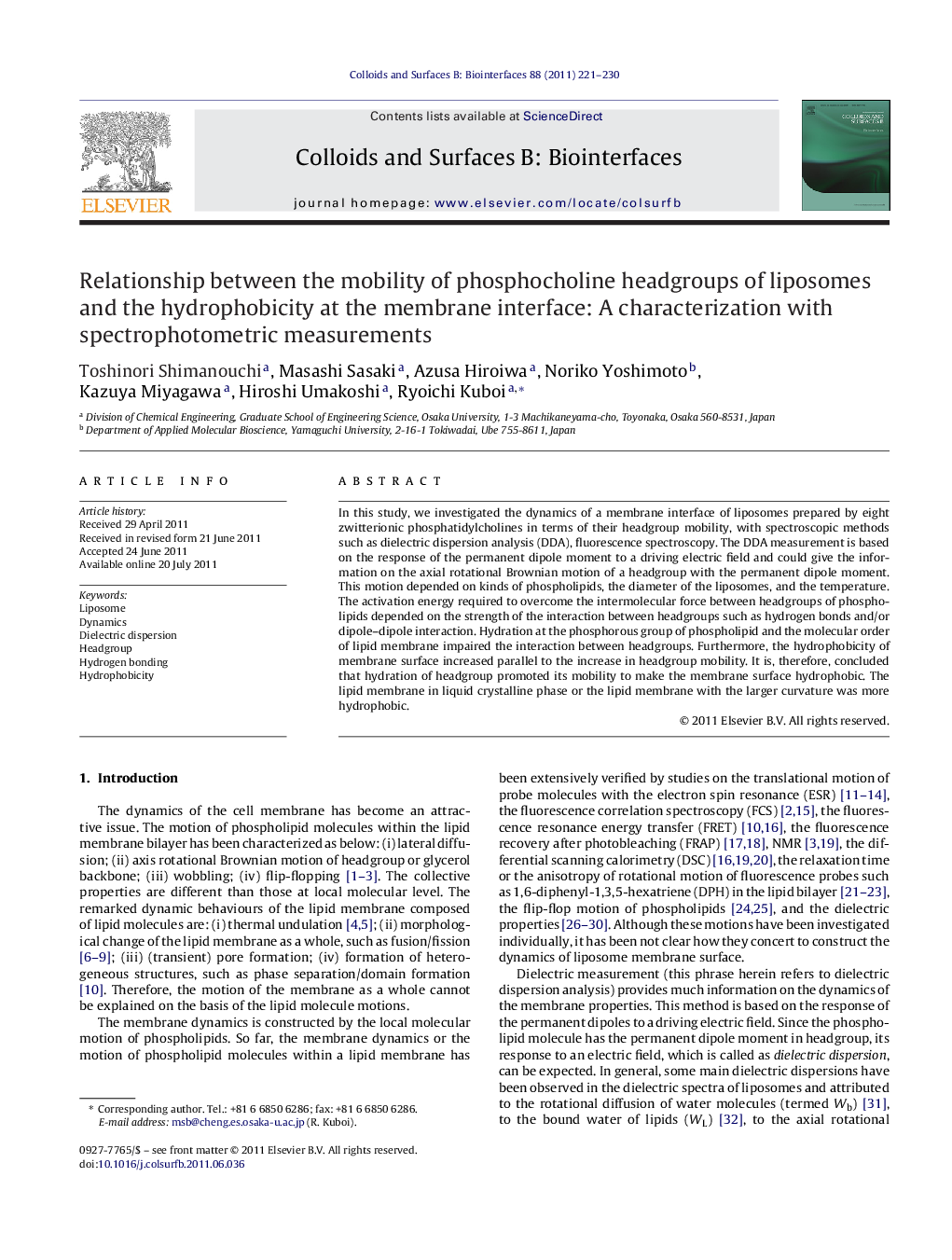| Article ID | Journal | Published Year | Pages | File Type |
|---|---|---|---|---|
| 601046 | Colloids and Surfaces B: Biointerfaces | 2011 | 10 Pages |
In this study, we investigated the dynamics of a membrane interface of liposomes prepared by eight zwitterionic phosphatidylcholines in terms of their headgroup mobility, with spectroscopic methods such as dielectric dispersion analysis (DDA), fluorescence spectroscopy. The DDA measurement is based on the response of the permanent dipole moment to a driving electric field and could give the information on the axial rotational Brownian motion of a headgroup with the permanent dipole moment. This motion depended on kinds of phospholipids, the diameter of the liposomes, and the temperature. The activation energy required to overcome the intermolecular force between headgroups of phospholipids depended on the strength of the interaction between headgroups such as hydrogen bonds and/or dipole–dipole interaction. Hydration at the phosphorous group of phospholipid and the molecular order of lipid membrane impaired the interaction between headgroups. Furthermore, the hydrophobicity of membrane surface increased parallel to the increase in headgroup mobility. It is, therefore, concluded that hydration of headgroup promoted its mobility to make the membrane surface hydrophobic. The lipid membrane in liquid crystalline phase or the lipid membrane with the larger curvature was more hydrophobic.
Graphical abstractFigure optionsDownload full-size imageDownload as PowerPoint slideHighlights► We examine how the mobility of lipid headgroups affects the membrane dynamics. ► Hydration of headgroup promoted its mobility to make the membrane surface hydrophobic. ► The lipid membrane in liquid crystalline phase was more fluid and hydrophobic. ► The lipid membrane with large curvature was more fluid and hydrophobic.
